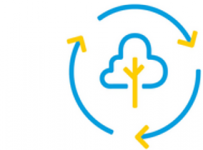
LA GAMMA E I SERVIZI DI FUNCTIONAL FORMS TRUCIRCLE™
La società sta attualmente affrontando alcune delle più grandi sfide e dobbiamo lavorare insieme per risolverle. La visione di SABIC per il futuro è che la plastica non dovrebbe mai finire nell'ambiente, nelle discariche o negli oceani per essere invece riutilizzata e ritrasformata in nuovi prodotti.
Questa visione richiede una riconversione totale della filiera. Abbiamo lavorato con i nostri partner a valle e a monte per reinventare e aprire la strada verso un'economia circolare a beneficio delle persone e del pianeta. Il nostro portafoglio e i nostri servizi TRUCIRCLE™ svolgono un ruolo significativo nel raggiungimento della nostra visione e nella chiusura del ciclo della plastica usata.
La gamma e i servizi TRUCIRCLE™ di SABIC sono la dimostrazione delle nostre innovazioni per la circolarità. Vogliamo dare ai produttori l'accesso a materiali più sostenibili. In modo da poter offrire al consumatore finale più fiducia nell'acquisto di prodotti, con la consapevolezza che il materiale potrà essere riciclato e riutilizzato, o che sia stato prodotto in un modo che contribuisca a proteggere le risorse naturali del nostro pianeta.
LA GAMMA E I SERVIZI DI SABIC FUNCTIONAL FORMS TRUCIRCLE™
La business unit Functional Forms di SABIC offre attualmente due categorie di prodotti sostenibili:

PRODOTTI RINNOVABILI CERTIFICATI:
Ridurre l'uso di combustibili fossili
Le lastre e i film LEXAN™ si basano su resine e prodotti chimici provenienti da materie prime a base biologica non in competizione con la catena alimentare e contribuiscono a mitigare il cambiamento climatico.

PRODOTTI RICICLATI MECCANICAMENTE:
Massimizzare il valore dei rifiuti
Le lastre e i film LEXAN™ sono prodotti basati su un alto contenuto di materiale riciclato proveniente dall'utilizzo post-consumo, che migliorano la capacità di processo e le proprietà di utilizzo finale.
Se vi serve aiuto per conoscere meglio questa nuova iniziativa TRUCIRCLE™ o se volete discutere di un'opportunità applicativa, potete mettervi in contatto con noi o con i nostri esperti del settore:
- Mr. Bart Kiekens bart.kiekens@sabic.com
- Mrs. Alda Shabanaj alda.shabanaj@sabic.com
TRUCIRCLE™ FAQ
What does TRUCIRCLE™ refer to?
In 2019, SABIC launched our ground-breaking TRUCIRCLE™ portfolio and services for circular solutions that can help our customers and brand owners to manufacture sustainable products to meet the growing challenges of today’s society.
SABIC’s TRUCIRCLE™ portfolio and services for circular solutions span; design for recyclability, mechanically recycled products, certified circular products from feedstock recycling of used plastics and certified renewables products from bio-based feedstock.
What is a polycarbonate based on certified renewable feedstock?
At SABIC we have utilized our value chain and unique position in Europe to produce polycarbonate using second generation renewable feedstock’s, not in competition with the food chain, to make a resin with an equal performance to that produced from fossil naphtha.
What exactly is the ISCC-PLUS certification scheme?
It is an independent system for the chemical industry to prove the sustainability of bio-based products. The scheme involves strict traceability and requires a chain of custody based on a mass balance system.
In which applications can the polycarbonate film and sheet based on certified renewable feedstock be used?
In principle, all applications currently using or that potentially will be using SABIC materials. However, only if the polycarbonate grades are produced in Bergen op Zoom, as this is the only (for now) ISCC-PLUS certified site where PC is produced. It is the customer's responsibility to inspect and test our product(s) regarding the suitability of their product(s) for themselves and its customers’ particular purposes.
What is the result of the LCA (Life Cycle Analysis) study?
SABIC’s cradle-to-gate peer-reviewed LCA study for our polycarbonate (PC) based on certified renewable feedstock solution reveals potentially significant reductions in carbon footprint (up to 61%), primarily enabled by the sequestration (removal) of carbon by biomass, and fossil depletion impacts (up to 35%) for the production of polycarbonate resin based on the incorporation of renewable feedstock, in comparison to fossil-based polycarbonate production.
The results also show potential environmental trade-offs with respect to marine eutrophication and water consumption.
Per trovare altre FAQ relative al portafoglio TRUCIRCLE™, cliccare qui.
 Deutsch
Deutsch
 English
English
 Española
Española
 Français
Français
 italiano
italiano
 Portugues BR
Portugues BR
 日本語 (Japanese)
日本語 (Japanese)
 中文 (Chinese - Mandarin)
中文 (Chinese - Mandarin)
 한국어 (Korean)
한국어 (Korean)

